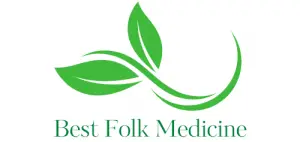A promising new wave of research shows that dandelion root extract (DRE)—a humble herbal remedy—can kill up to 95% of certain cancer cells in lab studies within 48 hours. While human clinical confirmation is still pending, here’s what the current data and holistic health lens reveal.
1. Lab Studies: Powerful Effects Against Colon Cancer Cells
A peer-reviewed study using aqueous dandelion root extract (DRE) found that over 95% of colon cancer cells underwent programmed cell death within two days—while healthy human cells remained unharmed. Treating mice with DRE also reduced tumor growth by over 90%, with minimal side effects observed in animal models.
This suggests strong selectivity—targeting cancer while preserving normal cells—a hallmark advantage in holistic medicine.
2. Other Lab Evidence: Breast, Liver, Stomach, and Prostate Cancers
- Colon cancer and AMPK activation: Methanolic DRE significantly reduced viability of liver (HepG2) cells via AMPK pathway activation, a key metabolism regulator.
- Triple-negative breast cancer (TNBC): Dandelion extract decreased proliferation and migration of aggressive TNBC cell lines in vitro and in mouse models—with minimal harm to normal breast cells.
- Colon cancer signaling: A comprehensive mechanism showed DRE triggers multiple apoptosis pathways (mitochondrial, death receptor) in colorectal models and is now entering Phase I clinical trials in Canada for hematological cancers.
- Gastric (stomach) cancer: DRE reduced growth and migration by downregulating tumor-fueling gene CCAT1, without toxicity to non-cancerous cells.
- Prostate cancer models: Oral DRE and lemongrass extract greatly reduced tumor burden in mouse models and acted synergistically with chemotherapy agents.
These multiple lines of evidence suggest a broad-spectrum anti-cancer potential in preclinical settings.
3. Coordinated Cell Death: Multiple Pathways Targeted
Research into DRE’s mechanisms shows it engages complex biochemical signaling:
- Apoptotic signaling: In breast cancer stem cells, DRE strongly increased TRAIL, DR4, and DR5 receptor expression—driving cancer cells toward programmed death.
- Reactive oxygen species: Exposure to DRE increased ROS in breast cancer cells, damaging cancer cell function while sparing healthy ones.
- Molecular pathways: In stomach and multiple myeloma cells, DRE modulated pathways like PI3K/Akt/mTOR, downregulated BCL‑2, upregulated BAX, and suppressed PD‑L1 expression—effectively halting growth and migration.
This diversity of attack pathways lends DRE a systemic edge, a hallmark of holistic botanicals.
4. Limitations: Human Evidence Is Still Needed
Despite compelling results, experts caution:
- No clinical trials in humans yet—all findings remain in laboratory cell cultures or animal models.
- The popular claim that dandelion kills 95–98% of cancer cells in 48 hours is based on cell culture data only, and does not equal curing cancer in humans.
- Safety and dosing unknown in real-world use—much more research is needed before therapeutic recommendations can be made confidently.
5. What This Means for Holistic Health Practices
While preclinical, this research reinforces core holistic health principles:
Botanical Synergy & Nutrient Density
Dandelion root contains polyphenols, flavonoids, taraxasterol, inulin, and triterpenes—compounds known for antioxidant, anti-inflammatory, digestive, and liver-supporting benefits.
Targeted Stress-Alchemy & Detox
Ingesting dandelion tea or tincture (under guidance) helps support liver detoxification, lymph flow, and low-level antioxidant defense, aligning with protocols for a clear cancer-prevention lifestyle.
Complementary Use with Conventional Medicine
Lab evidence shows combining DRE with chemotherapy (e.g. taxol) may enhance cancer-cell death while reducing collateral damage to healthy tissue. This supports integrative oncology perspectives.
6. Practical Approaches to Dandelion Use (With Caution)
If integrating dandelion root is considered:
- Choose reliable sources: Organic, lab-tested products certified by USP or NSF to ensure purity and avoid contamination.
- Moderate intake: Doses in lab studies are high (e.g. mg/mL range), not equivalent to typical herbal teas or tinctures—introduce gradually.
- Consult a healthcare provider: Especially if you take medications like anticoagulants or have allergies to ragweed or related plants.
- Do not treat alone: Use as part of a balanced wellness program—diet, stress reduction, exercise, screenings—not as a stand-alone cancer treatment.
7. Summary Table of Preclinical Findings
| Cancer Type | Model | Outcome with DRE |
|---|---|---|
| Colon cancer | Cell culture & mice | 95% cancer cell death in 48 hours; tumor growth ↓90% |
| Liver cancer (HepG2) | Cell culture | Viability drastically reduced via AMPK pathway |
| TNBC (breast) | Cells & mice models | Reduced proliferation/migration with selectivity |
| Gastric (stomach) | Cell culture | Growth & migration suppressed via CCAT1 gene modulation |
| Prostate cancer | Xenograft mice plus taxol | Tumor burden significantly reduced with synergy |
8. Holistic Integration: Beyond the Lab
Implement a multi-layered prevention protocol:
- Annual screenings for family risk cases.
- Incorporate whole-food, plant-rich diet high in cruciferous veggies, berries, phytonutrient-rich herbs.
- Lifestyle medicine: stress management (meditation, yoga), sleep quality, moderate exercise.
- Targeted botanical support, including dandelion root tea or tincture (under guidance), to support detox pathways.
Final Thoughts
Lab studies demonstrate that dandelion root extract can kill up to 95% of certain cancer cells within 48 hours, while sparing healthy cells—a finding rich with holistic potential. These effects result from complex biochemical pathways, including apoptosis signaling and gene modulation, observed across colon, breast, stomach, liver, and prostate cancer models.
Still, no human trials yet confirm these effects—claims should be framed carefully. But as part of a broader holistic approach, dandelion root offers a promising botanical ally worth watching. If used thoughtfully and under the guidance of a qualified health professional, it may become one more tool in comprehensive preventive wellness strategy.
Note: This article is informational and not a substitute for medical advice. Always consult a qualified healthcare provider before using herbal remedies or making treatment decisions.
Sources
